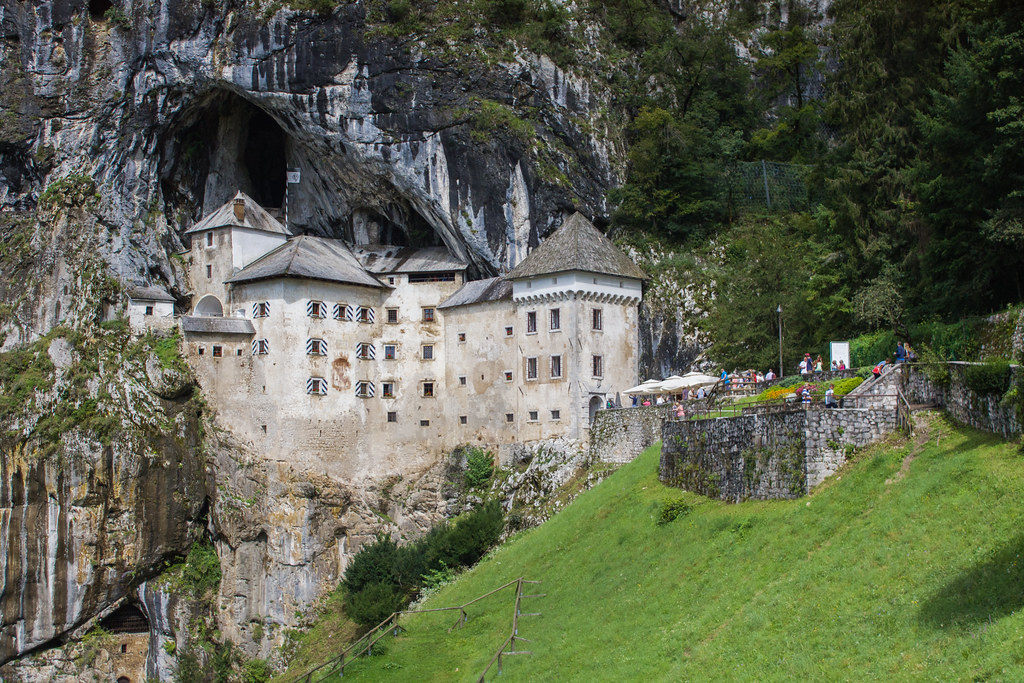Most beautiful castles in Slovenia
Slovenia is rich in castles and fortified manor houses. Many of them are located on a beautiful mountain peak or lake shore scenery like the glorious Bled castle and rare Predjama castle built within a cave mouth.

Ljubljana Castle
Ljubljana Castle stands above the downtown of Ljubljana, the capital of Slovenia. Originally a Medieval fortress, probably built in the 11th century and rebuilt in the 12th century, it acquired its present outline with an almost complete overhaul in the 15th century, whereas the majority of the buildings date to the 16th and 17th centuries.
Read more about Ljubljana Castle
Bled Castle
Bled Castle is built on a precipice above the city of Bled in Slovenia, overlooking Lake Bled. According to written sources, it is the oldest Slovenian castle and is currently one of the most visited tourist attractions in Slovenia. The history of the castle reaches back to 1004 when the German Emperor Henry II gave his estate at Bled to Bishop Albuin of Brixen.
Read more about Bled Castle
Predjama Castle
Predjama Castle is a Renaissance castle built within a cave mouth in the historical region of Inner Carniola. The castle was first mentioned in the year 1274 with the German name Luegg, when the Patriarch of Aquileia built the castle in Gothic style. The castle was built under a natural rocky arch high in the stone wall to make access to it difficult.
Read more about Predjama Castle
Celje Castle
Celje Castle was once the largest fortification on Slovenian territory. The first fortified building on the site (a Romanesque palace) was built in the first half of the 13th century by the Counts of Heunburg from Carinthia on the stony outcrop on the western side of the ridge where the castle stands.
Read more about Celje Castle
Zuzemberk Castle
One of the most picturesque castles in Slovenia, Žužemberk Castle originated in the 13th century but acquired its present shape during the 16th century when its defences were reinforced with seven huge round towers. From 1538 until World War II, it was owned by the Auersperg family of Turjak.
Read more about Zuzemberk Castle
Otocec Castle
Otočec Castle is a castle hotel on a small island in the middle of the Krka River. It is the only water castle in Slovenia and one of the most picturesque images in the country and is a prominent cultural and natural monument. The castle was first mentioned in documents in the 13th century, although the walls are said to date to the more precise date of 1252.
Read more about Otocec Castle
Little Castle
Little Castle (Mali grad) in Kamnik was constructed in the 11th or early 12th century at the strategic site above the narrow passage near an important trail. The Romanesque chapel of St. Eligius is one of the most important Slovene medieval monuments, despite later alterations, and is one of the oldest of its kind in Europe.
Read more about Little Castle
Sneznik Castle
Snežnik Castle construction time is unclear; its existence is first implied in 1269, by way of mention of its owner Meinhard von Schneberg. The castle itself was first mentioned in 1461, at the time it was a possession of the Patriarchate of Aquileia, with the Schnebergs as their ministeriales.
Read more about Sneznik Castle
Slovenska Bistrica Castle
The predecessor of the current Slovenska Bistrica castle is first mentioned in 1265, when emperor Rudolf gave it and the adjoining town in fief to count (from 1286 duke of Carinthia) Meinhard of Gorizia. In 1313, it passed to the Habsburgs, who leased the castle and town to the noble house of Walsee.
Read more about Slovenska Bistrica Castle
Gewerkenegg Castle
Gewerkenegg Castle dominates the Idrija city. It was erected at the beginning of the 16th century to serve as the administrative headquarters and warehouse of the Idrija mine, then the second largest mercury mine in the world.
Read more about Gewerkenegg Castle
Branik Castle
Branik Castle, also known as Rihemberk Castle, is a 13th-century castle above the village of Branik. Fortified settlements have been present on the hill since prehistoric times; the site was once occupied by a Roman castrum.
Read more about Branik Castle
Mokrice Castle
Mokrice Castle is located on a hill in the northern part of the settlement of Rajec near the Croatian border. First mentioned in 1444, it was rebuilt in the 16th century and in 1941. The beginnings of the design of the castle garden belong to the period of late Baroque in the 18th century: a symmetrically regular axial scheme was arranged south of the castle.
Read more about Mokrice Castle
Gracar Turn Castle
The Gracar Turn ('Grätzer"s Tower') is not recorded in medieval sources, though the historian Valvasor mentions a manor stood on the site in the 14th century, built by the Grätzer family from nearby Gradac, whence its name derives. After passing through numerous hands, it was purchased by Anton Rudež in 1821.
Read more about Gracar Turn Castle
Turjak Castle
Turjak Castle is a 13th-century fairly well known castle in Slovenia and one of the most impressive in the area. The first Turjak castle was built on the site as early as the late 11th century by the knights (later counts) von Auersperg. It may have been extant by 1062, the date the family (specifically Konrad von Auersperg) is first mentioned.
Read more about Turjak Castle